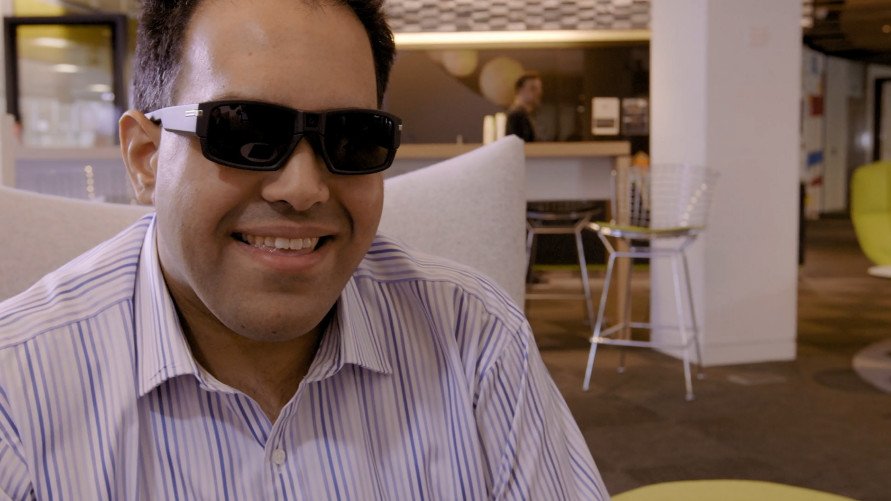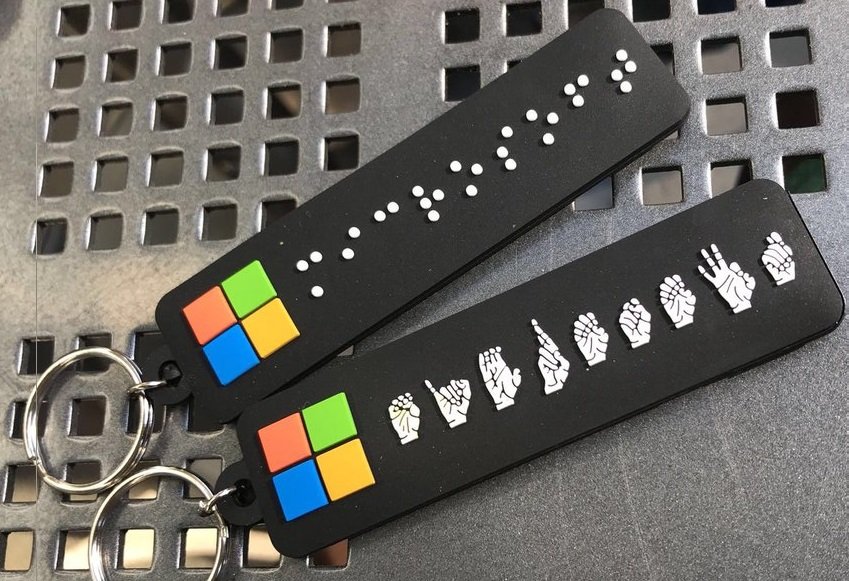How Microsoft's inclusion mission is helping the blind to 'see'
There about 253 million people who live with some degree of visual impairment. Microsoft wants to embrace them with its products and represent them in its workforce.

Sight is probably the most valued of our five senses. Age inevitably begins robbing most of us of its acuity forcing our dependence on corrective lenses. Those born blind or lose their sight are often resigned to the loss of the benefits it imparts.
Finding employment can often be a challenge for someone with a visual impairment. Less qualified sighted people may be hired for a position though a person with a visual impairment could also do the job and is better qualified. Access to commonly used technology may also be out of reach. Historically, technology has not been purposefully engineered to include all individuals of varying abilities.
Microsoft seeks to address both employment and product design issues with a deep and broad mission of inclusion:
The Design team gathered insights around the true meaning of universal design that is intentionally inclusive of people with disabilities from the beginning.
- How fathering a son with disabilities helped Microsoft's CEO transform the company
- Microsoft's Autism Hiring Program aims to attract diverse talent
- How Microsoft used tech to help people with ALS regain mobility
- How Microsoft is helping deaf people 'hear'
Seeing the needs of the blind
Saquib Shaikh, is blind but demonstrates using a screen reader to write code.
Individuals who are blind rely on hearing, touch, taste and smell to perceive what others can see and react to via sight. Naturally, these other senses are unable to perceive things like facial expressions, printed text, or certain activities. Navigating a PC, social interactions and the broader environment are therefore a challenge for the visually impaired.
Ease of access options in Widows such as a magnifier, narrator and high contrast mode are helpful to the visually impaired. It's inspiring to see just how powerful these tools can be. Saquib Shaikh, a software engineer at Microsoft who is also blind, uses screen reader technology in Visual Studio to help him code just as proficiently and creatively as a sighted person. It's impressive that Shaikh's screen reader narrates at a pace sighted people can't keep up with, but that his trained ears are attuned to.
Imagine the resource that would have been lost to Microsoft if the company bypassed Shaikh because he is blind, or if Windows was not designed to be inclusive. Even more impressive is Shaikh's creativity as reflected in his use of AI to create powerful technology to help the visually impaired "see" the world.
Get the Windows Central Newsletter
All the latest news, reviews, and guides for Windows and Xbox diehards.
Seeing AI
Microsoft CEO Satya Nadella introduced Shaikh during the company's 2015 Build Developers Conference. Shaikh introduced his unique application of Microsoft's Cognitive Services. He created a program that uses artificial intelligence to "see" the world via a pair of glasses. That information is then conveyed to the wearer via voice.
The technology was proven able to recognize facial expressions, gender, age, what someone is doing and even read printed text. It's amazing that a blind man used Microsoft's technology to bring the benefits of sight to the blind. This technology eventually became the "Seeing AI" app which is currently available in the App Store.
A blind man used tech to bring some of the benefits of sight to the blind.
The benefits of inclusion bring a perspective and passion to a team that helps to foster innovation that might otherwise be missed. Saikhs' position, accomplishments and contributions to the needs of others proves inclusion must be an end-to-end mission. Representatives of the market served must be part of the teams serving the market. This brings perspectives and empathy to the team that others may otherwise be blind to.
Making experiences, not just technology, accessible
Amos Miller, is a Microsoft employee with a visual impairment. He says working at Microsoft is like working in a toy store. He goes on to share how technology's role is to support making a person's experiences accessible:
Accessibility is no longer...about is the screen accessible or how you interact with the device. It's going to be about is your experience with the environment around you, and tee people that you're with, and the stuff, you do accessible when its supported with technology?
If we understand the goal is making experiences accessible, not just enabling the interactions with things, we will be more empathetic towards the needs and challenges others face. We will then work to provide the means to enable those experiences.
The key is getting everyone onboard…

Just as the civil rights movement could not have succeeded without the support of those not directly affected by bigotry, a company's inclusion mission can't succeed without the support of people without a disability.
We can all contribute to ensuring people of varying abilities are included in the range of experiences available to all of us. It begins with acknowledging the value we all inherently possess. When we embrace that, we are more sensitive to when there are barriers preventing people from accessing experiences.
Empathy has a way of opening our eyes.
Jason L Ward is a columnist at Windows Central. He provides unique big picture analysis of the complex world of Microsoft. Jason takes the small clues and gives you an insightful big picture perspective through storytelling that you won't find *anywhere* else. Seriously, this dude thinks outside the box. Follow him on Twitter at @JLTechWord. He's doing the "write" thing!

